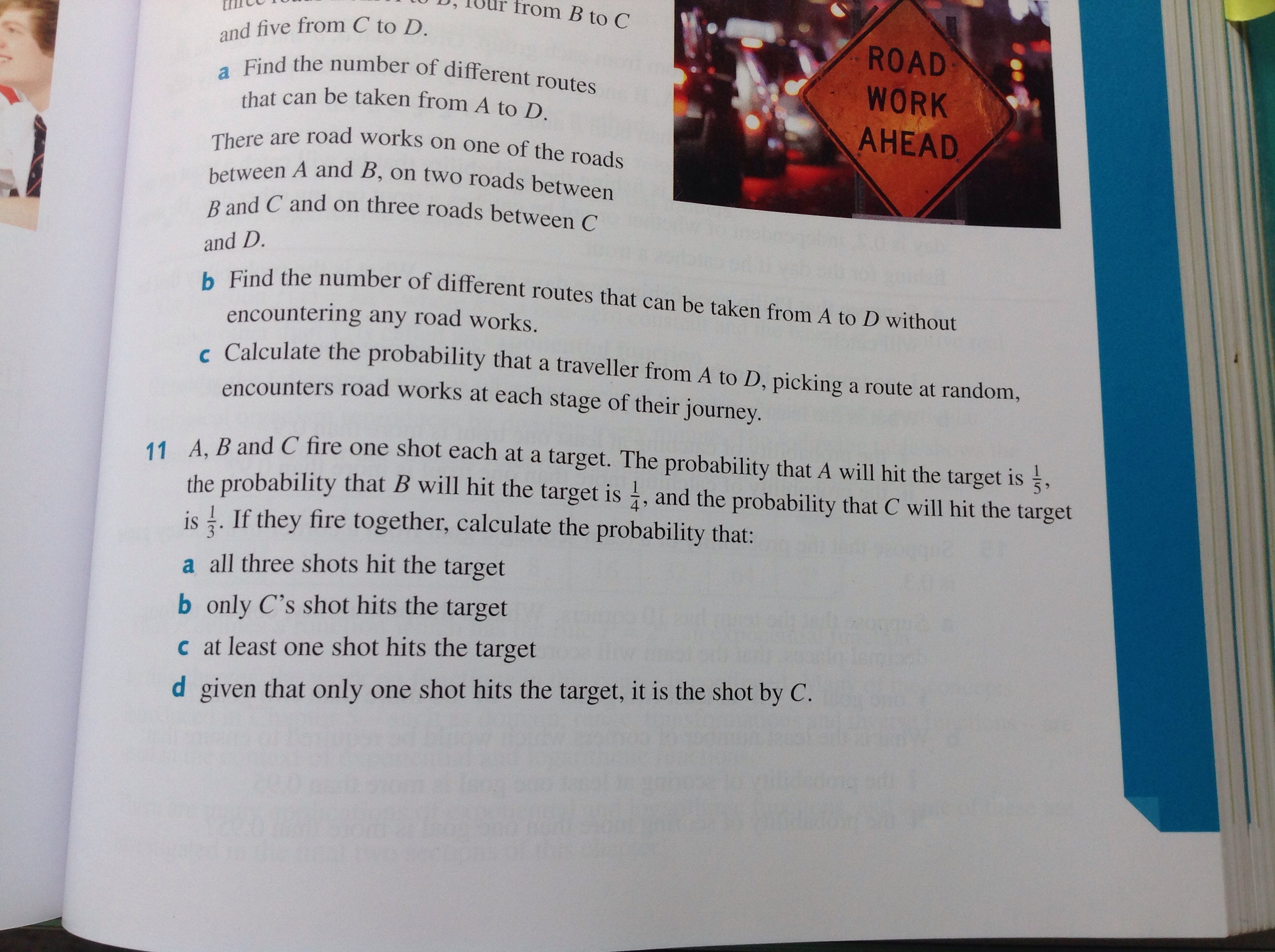How to solve extended response question using probability?

Can someone please explain to me how to do question 11? Thanks!

Can someone please explain to me how to do question 11? Thanks!
1 Answer
A)
B)
C)
D)
Explanation:
Take the problem in turns:
Part A
The probability that all three shots hit the target is the probability
Since we assume that each shooter is independent of each other, this will be
Part B
The probability that only C's shot will hit the target is
Again, since we assume that each shooter is independent of each other, this will be
Part C
The probability of at least 1 of A, B, or C hitting the target may seem tricky to solve, but we have to consider a clever alternate way to solve this. Since the sum of all probabilities in a problem space is 1, we could find the probability that none of the shots hit the target. If we find the complement of that (ie, we subtract that from 1), we are left with all of the probabilities that result in some combination of shots hitting the target; it could be just A, or just B, or just C, or A and B, or A and C, or B and C, or all three. It's far easier to calculate none hitting and subtract from 1 than each of the 7 I just listed and adding them together.
Now, the probability of at least 1 hit:
Part D
The probability of C being the shot to hit the target, given that only 1 shot hit is calculated a little differently. This is an example of a conditional probability, or one in which you are finding the probability of a certain event happening given that you know ahead of time that another event happened.
In this case, we are told that a single shot hit the target. (At this point it could be only A, or only B, or only C). Let's say O represents only one shot hitting. The probability question for this question can be represented as
For conditional probability questions, we have a formula we can use:
The top value
To find
To find
Thus,
Lastly, we can now use the conditional formula:
